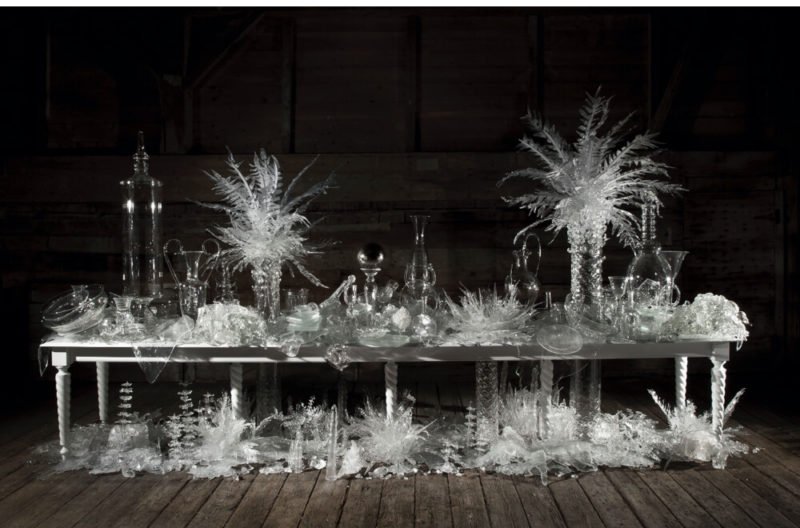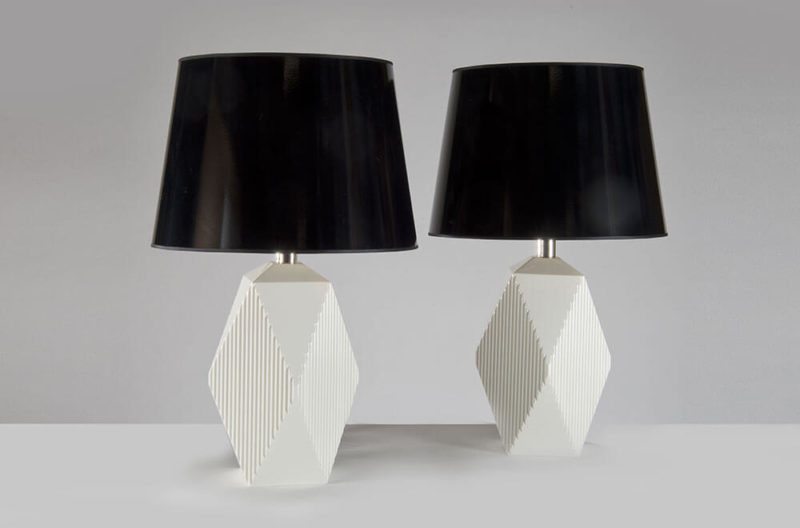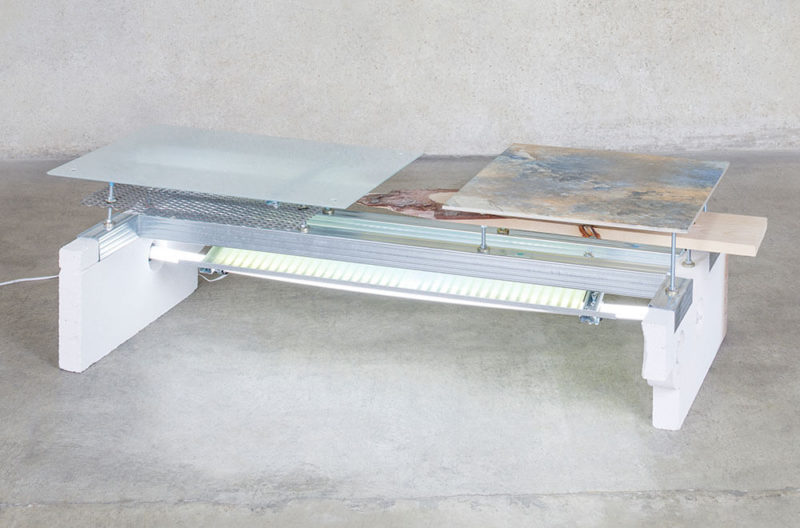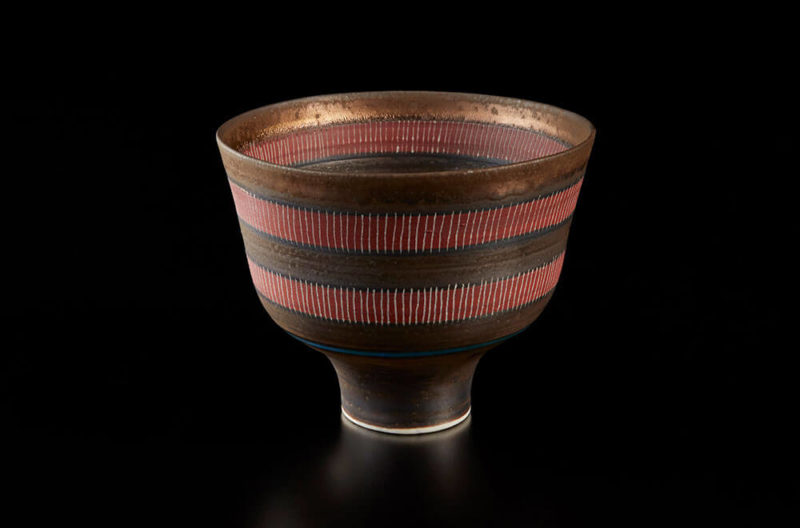Piasa: Christian Astuguevieille / SALE PREVIEW
A personal collection from the French polymath designer, well known for his rope-wrapped furniture and tribal-inspired sculpture.
La Patinoire Royale – Galerie Valérie Bach, Brussels
20th January 2021
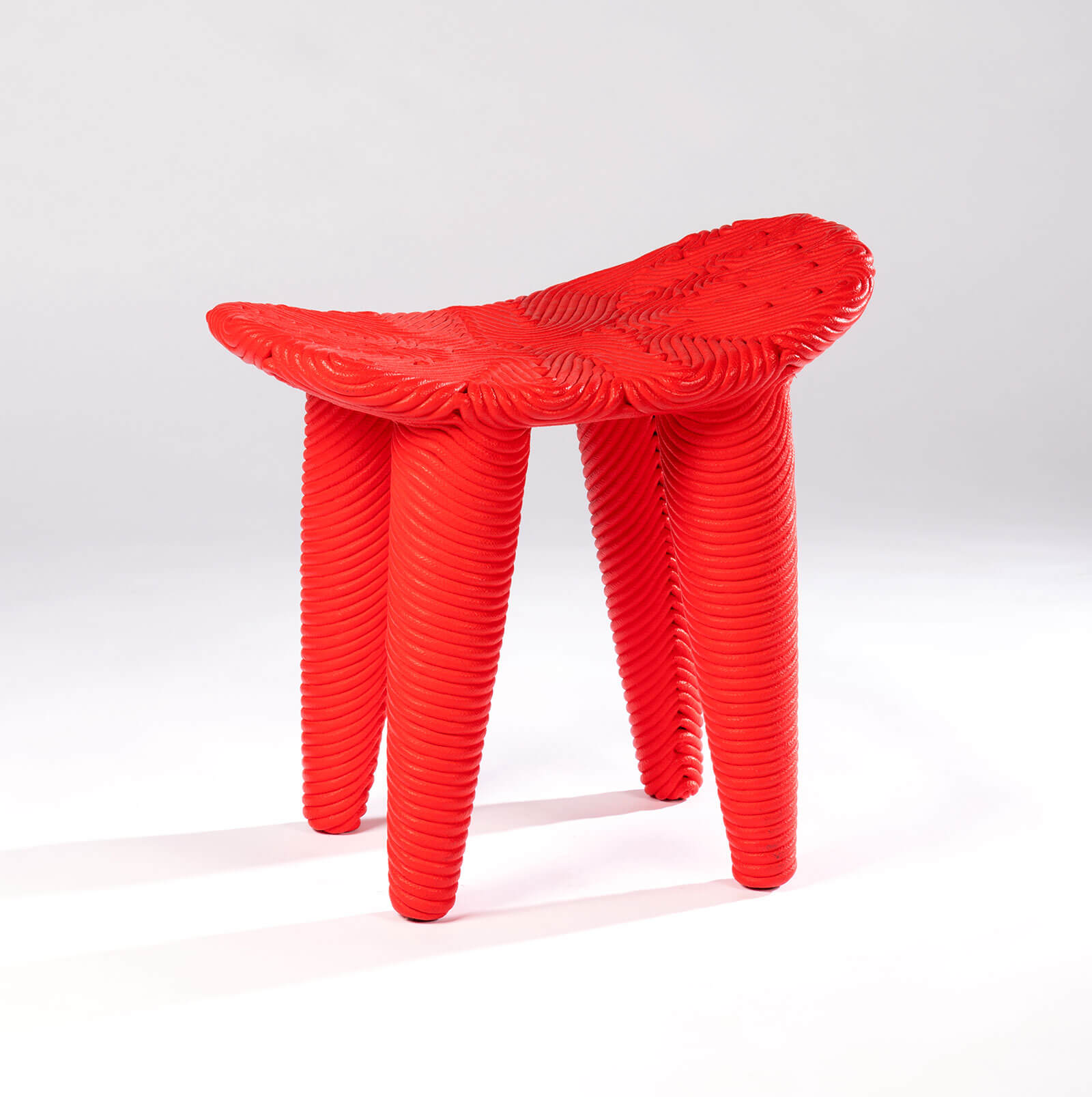
Christian Astuguevieille, ‘Artfrique’, 2016. (Estimate: €3,500 – €4,500. Sold for €7,800)
COURTESY: Piasa / PHOTOGRAPH: © Xavier Defaix
PIASA IS SEEING in 2021 with its second selling exhibition dedicated to the French designer Christian Astuguevieille. Rather than taking place in Piasa’s Paris headquarters, the sale is being held at La Patinoire Royale – Galerie Valérie Bach in Brussels. Piasa and Bach, whose gallery is in a former ice-skating rink, began teaming up in 2018 to organise three design auctions in Brussels annually.
Due to take place last May, but delayed because of the pandemic, the sale follows on from Astuguevieille’s previous one with Piasa three years ago. Once again, all the pieces have come straight from his personal collection. Astuguevieille is not represented by a gallery, although some of his works are sold by Armel Soyer (Paris/Megève), so everything is fresh to the market from his studio in Bayonne in the Basque country, southwest France.

Christian Astuguevieille, ‘Botte D’Herbes’, 2012. (Estimate: €8,000 – €12,000)
COURTESY: Piasa / PHOTOGRAPH: © Xavier Defaix
On view are 84 lots, including furniture, sculpture, paintings and drawings, many of which are unique pieces or prototypes. Why is Astuguevieille separating himself from them? “I had two studios in Bayonne and I decided a few months ago to close one of them,” Astuguevieille, 74, replies. “I’ve been with some of these beloved objects every day so it’s difficult to part with them, but they’ll go into people’s houses, so it’s a way of sharing.”
Two things are immediately apparent: Astuguevieille’s passion for using many metres of rope to meticulously construct pieces of furniture; and his love of Oceanic and African arts from which he draws inspiration to make chairs and bowls, divinity figures and totems. The ensemble evokes a richly personal universe where ritualistic elements from non-Western cultures are reinterpreted through Astuguevieille’s unique vision.

Christian Astuguevieille, ‘Vase Bleu’, 2015. (Estimate: €3,000 – €4,000. Sold for €5,850)
COURTESY: Piasa / PHOTOGRAPH: © Xavier Defaix
“All those things nourish me, are digested and are expressed in my own way,” says Astuguevieille, who has made several trips to Australia and New Zealand. He comments, “My work stands out in a house and so when somebody buys a piece from me, they often come back later for a second piece that corresponds to the first.”
Astuguevieille started creating objects from rope in 1983 and had his first exhibition in a Parisian gallery six years later. “Rope is my favourite material and also my companion – it confirms and inspires my desires and contributes a lot to the creative process,” he says. “In the studio, we aim for each piece to be perfect.”
A key piece is the ‘Minoka’ (1991) banquette from the ‘Minerals and Shells’ collection – lot 57, estimate €8,000 – €10,000 – that is made from natural hemp rope and characterised by innumerable ridges. “The back of this small sofa is a bit like some wavy shells; hemp rope can follow that wavy form and give volume,” Astuguevieille remarks.
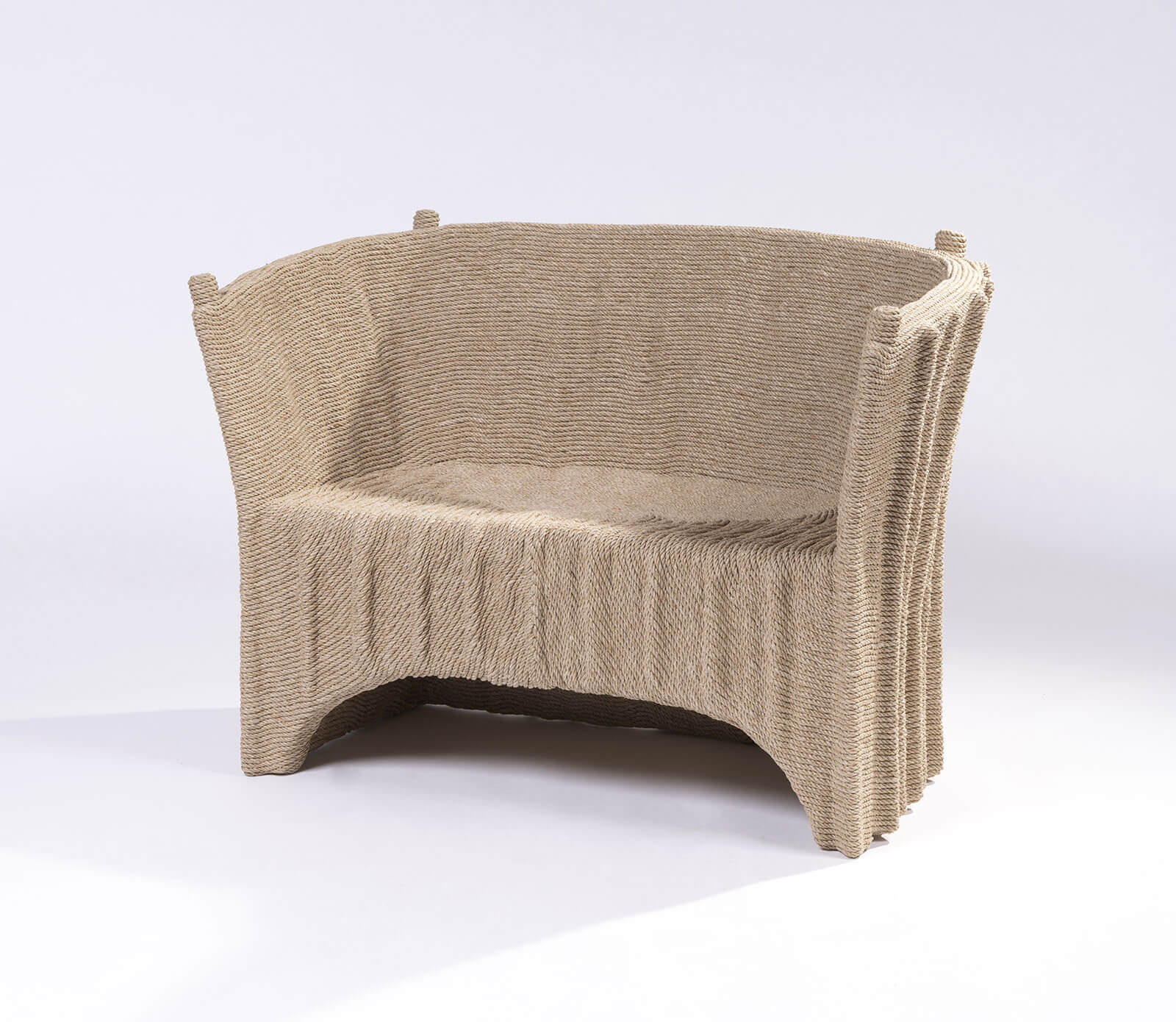
Christian Astuguevieille, ‘Minoka’, 1991. (Estimate: €8,000 – €12,000. Sold for €10,400)
COURTESY: Piasa / PHOTOGRAPH: © Xavier Defaix
Black painted rope has been deftly employed to make striking pieces of furniture from the 1980s onwards, a recent example being the ‘Mirakou’ (2018) wardrobe – lot 3, estimate €18,000 – €25,000.
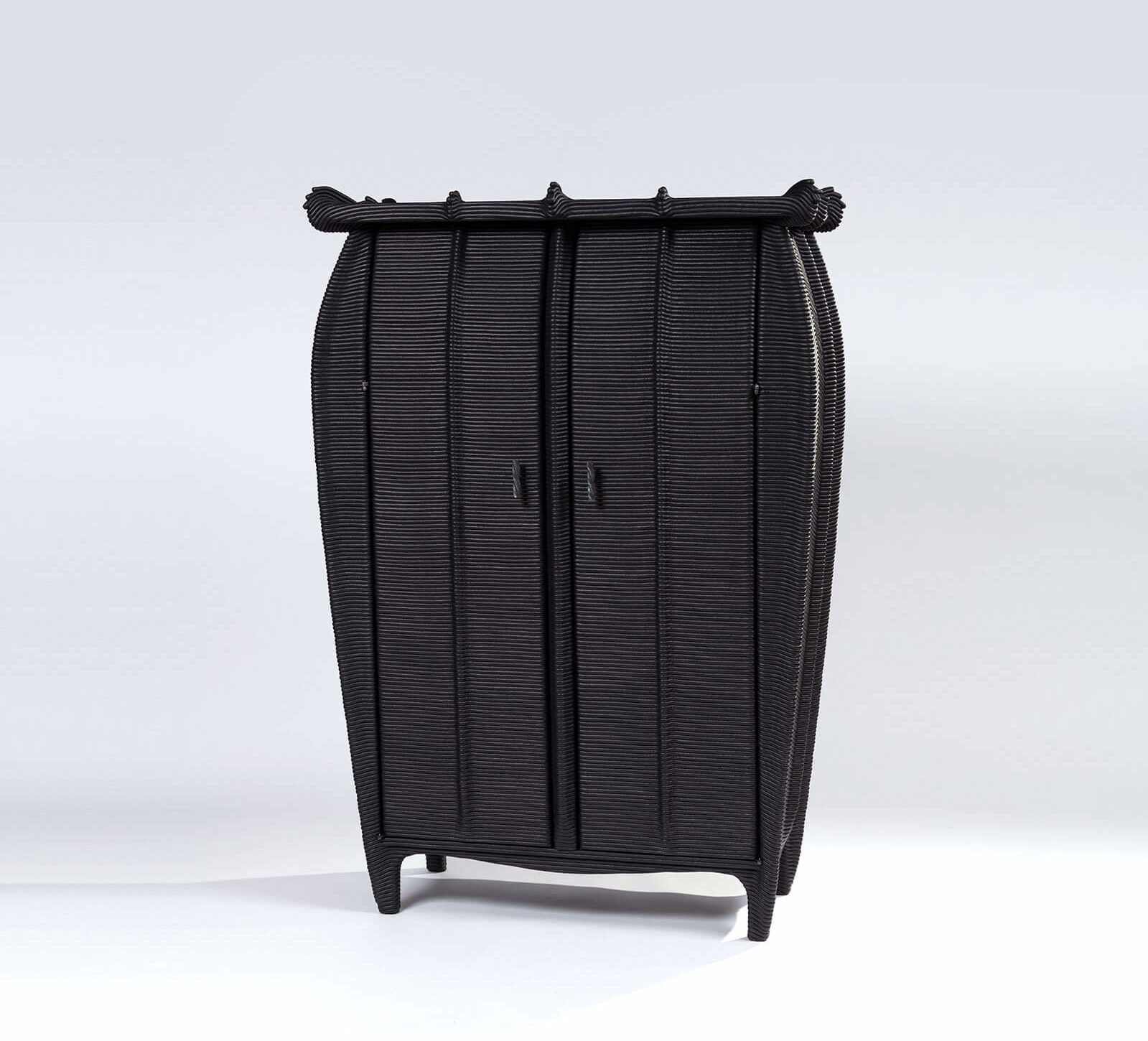
Christian Astuguevieille, ‘Mirakou’ wardrobe, 2018. (Estimate: €18,000 – €25,000)
COURTESY: Piasa / PHOTOGRAPH: © Xavier Defaix
Singularly expressive are the chairs denoting the influence of chieftain tribal chairs. Designed with ornamental attention to detail is the ‘Moissonier’ chair (2003) – lot 26, estimate €3,000 – €4,000. A similar piece made from hemp fetched €13,000 in 2018. Another standout is the highly sculptural ‘Centoum’ armchair (2008) – lot 33, estimate €5,000 – €7,000. Three years ago the prototype went under the hammer for €18,850, soaring past its estimate.
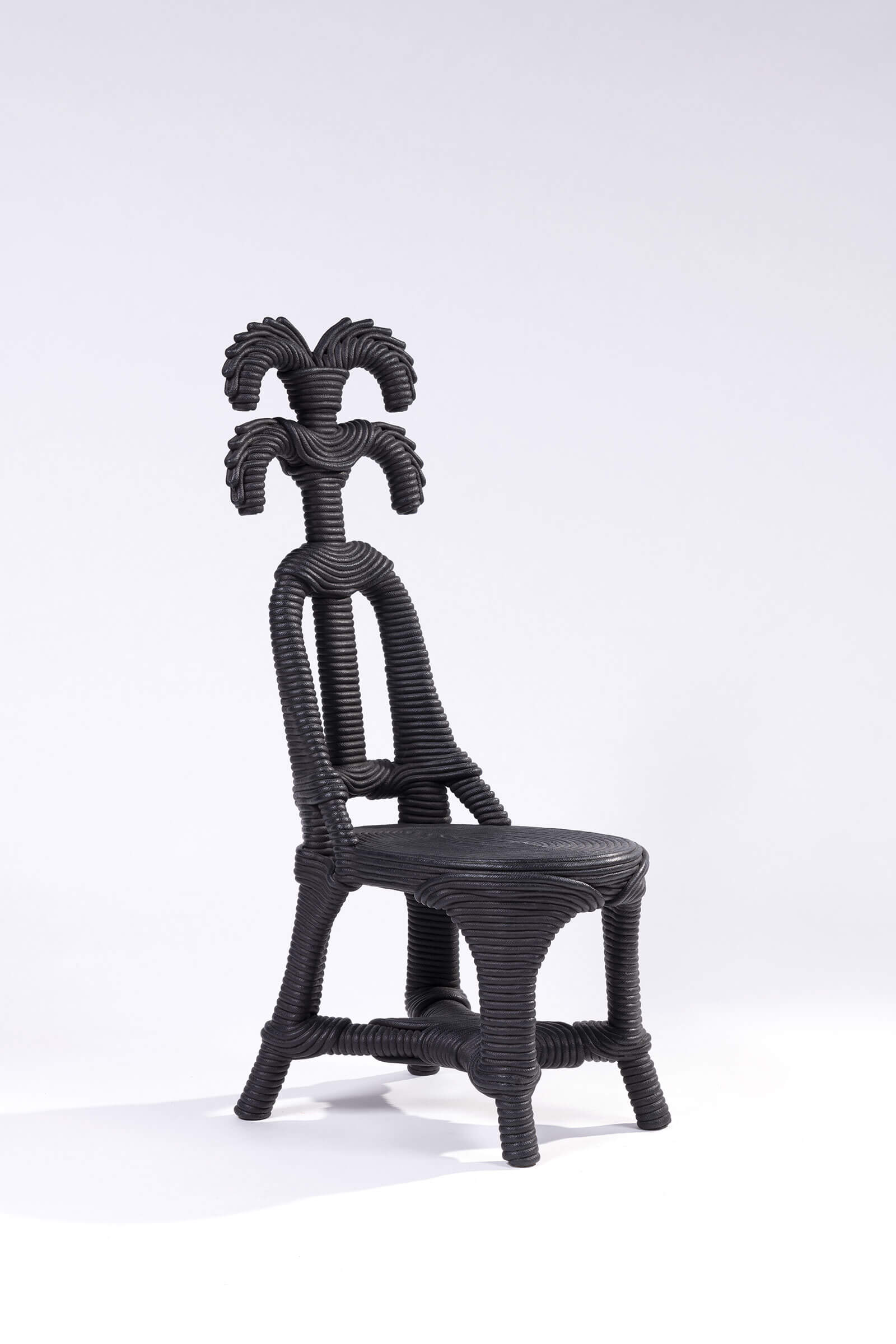
Christian Astuguevieille, ‘Moissonier’, 2003. (Estimate: €3,000 – €4,000. Sold for €9,100)
COURTESY: Piasa / PHOTOGRAPH: © Xavier Defaix
“Rope is my favourite material and also my companion because it participates a lot in the creative process”
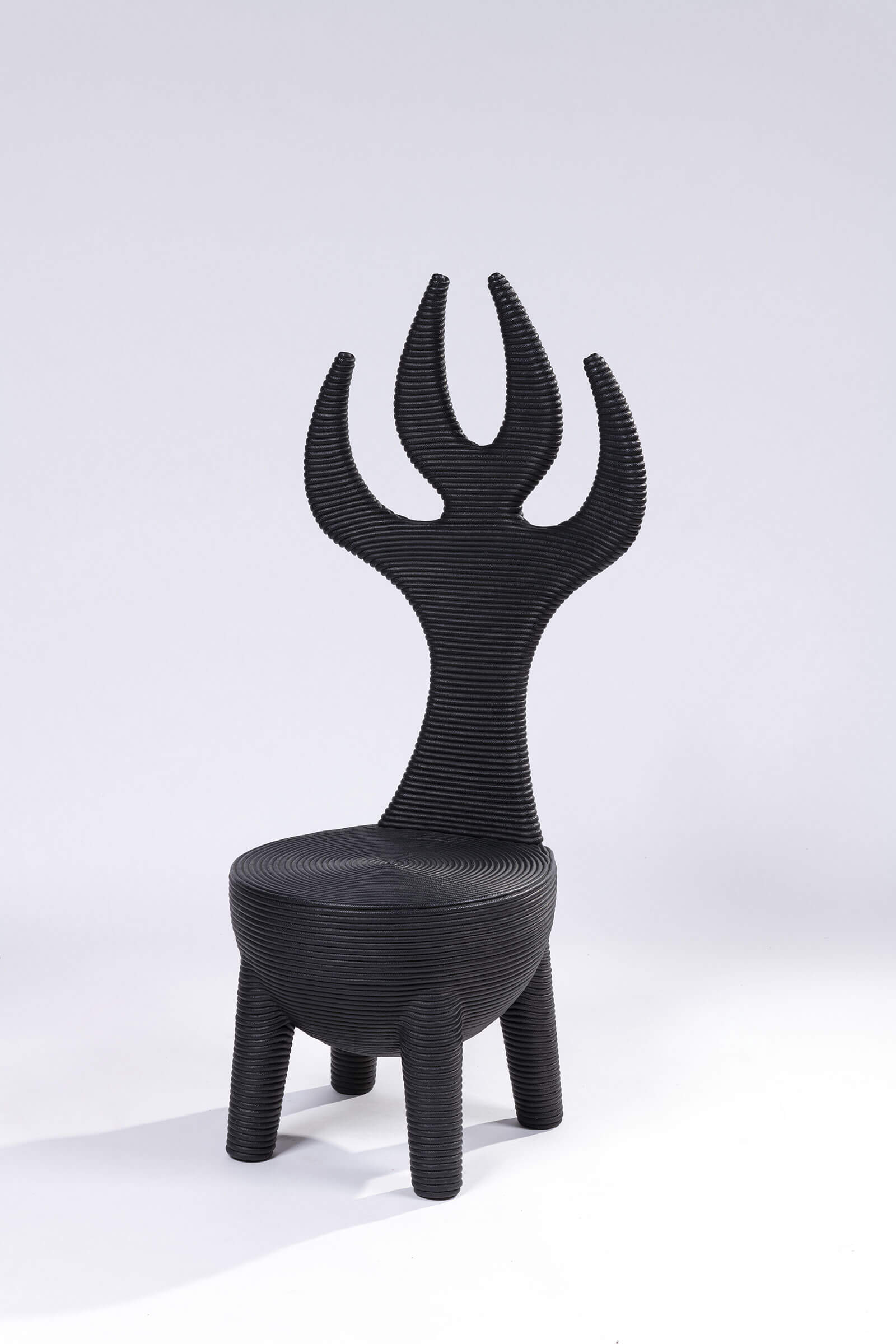
Christian Astuguevieille, ‘Centoum’, 2008. (Estimate: €5,000 – €7,000. Sold for €9,100)
COURTESY: Piasa / PHOTOGRAPH: © Xavier Defaix
“I’ve been with some of these beloved objects every day so it’s difficult to part with them”
Astuguevieille’s predilection for unusual and unexpected materials applies to other domains too. He creates fragrances for Comme des Garçons, the latest being ‘Rouge’ with notes of beetroot, pink pepper and incense – further illustrating his non-conformist attitude.
Underscoring his activities is an incessant desire to draw. “I draw every day for three or four hours,” Astuguevieille says. “The days when I don’t draw because I have meetings or have to travel are difficult. Drawing is my best way of expressing myself.”
Piasa sale: Christian Astuguevieille




